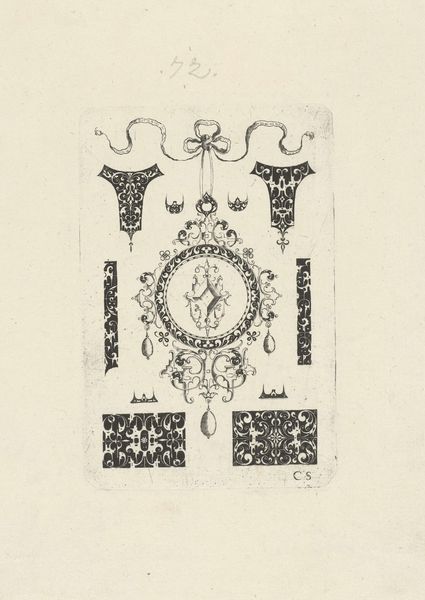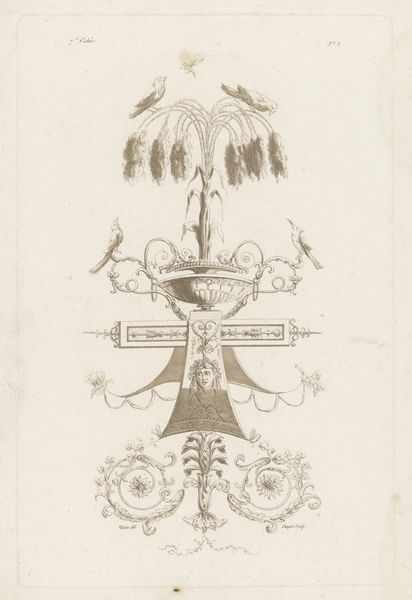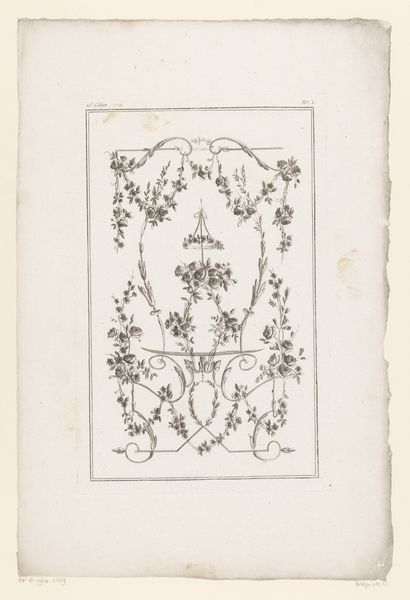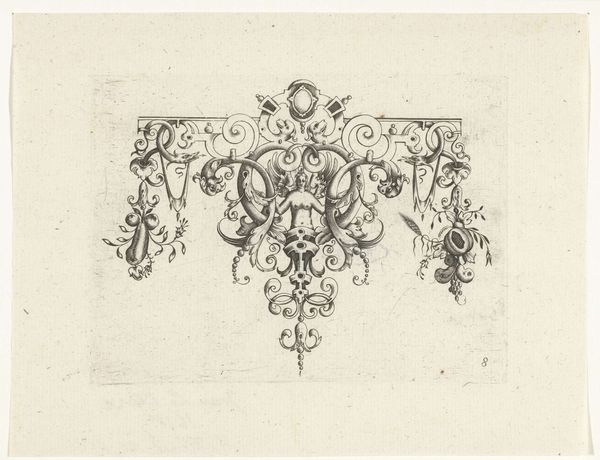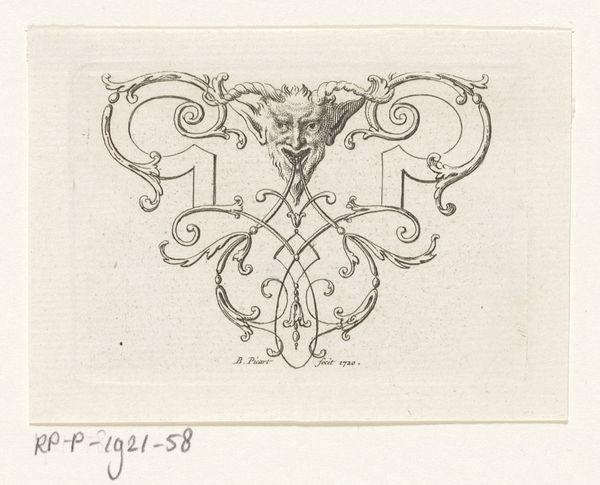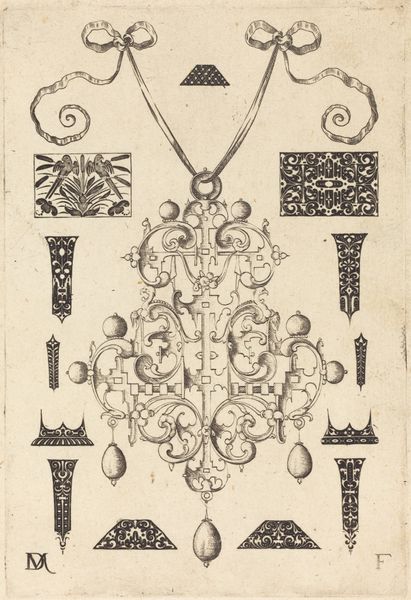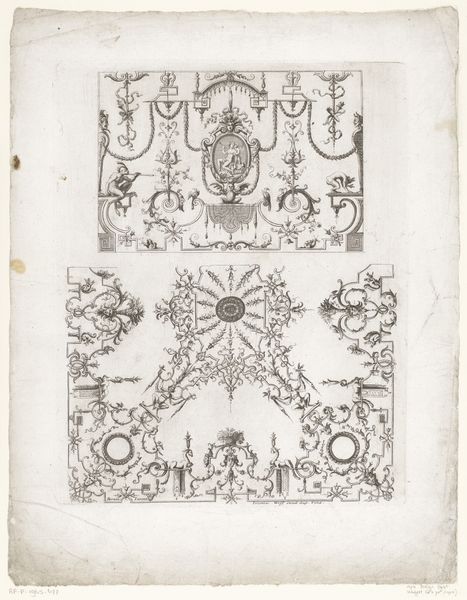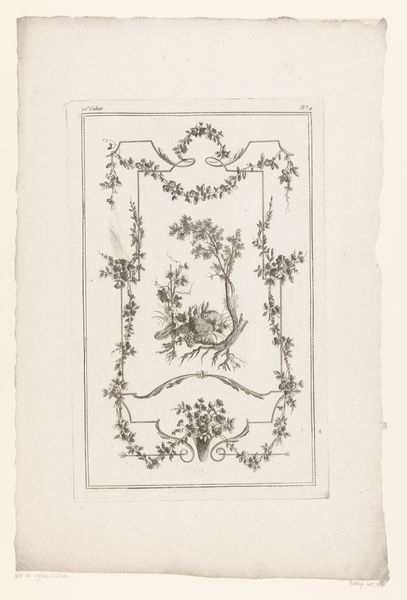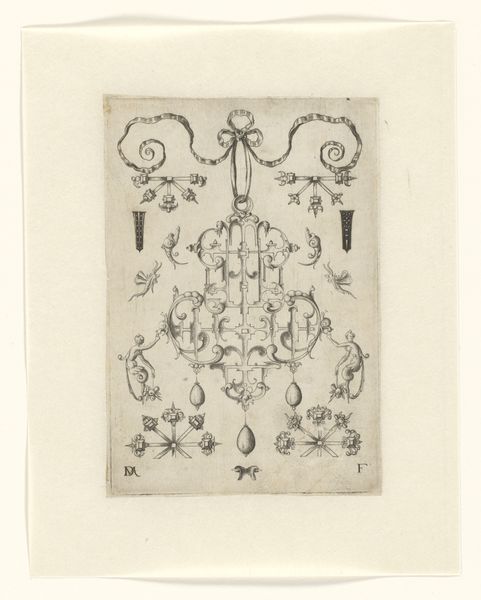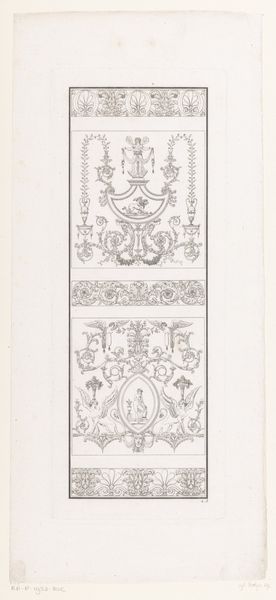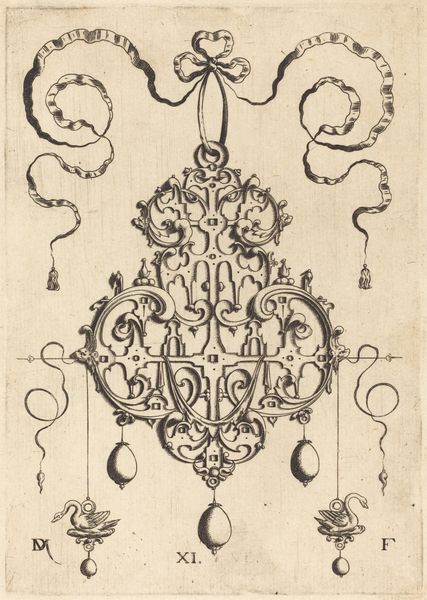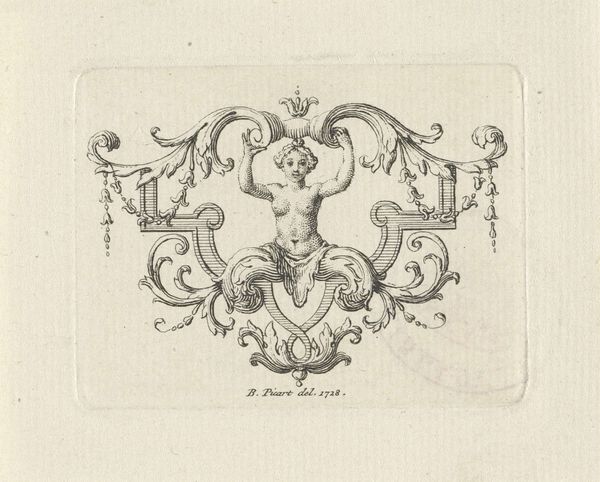
drawing, ornament, ink, engraving
#
drawing
#
ornament
#
pen drawing
#
pen illustration
#
pen sketch
#
old engraving style
#
11_renaissance
#
ink
#
pen-ink sketch
#
pen work
#
sketchbook drawing
#
engraving
Dimensions: height 109 mm, width 74 mm
Copyright: Rijks Museum: Open Domain
Curator: This intricate pen and ink drawing is called "Hanger met een medaillon" or "Pendant with a Medallion." It's attributed to Corbinian Saur, and likely dates from between 1575 and 1635. The print showcases a variety of pendant designs, reflective of Renaissance ornament styles. Editor: It reminds me of a jeweler's sketchbook – a glimpse into the designs popular among the wealthy. There's something playful, yet also rigid, in the symmetry. I wonder, were these designs aspirational, or directly commissioned? Curator: Precisely! Prints like these circulated as models for goldsmiths and other artisans. Consider the function of this print: disseminating fashionable design ideas to a broader audience. It reveals the crucial role printmaking played in shaping visual culture during that period. Editor: Absolutely, it demonstrates the commodification of style and aspiration during the late Renaissance. Looking closely, the level of detail suggests this was geared toward an elite clientele. Did the designs influence dress codes, indicating wealth, social status, or possibly religious affiliation? Curator: The designs echo patterns used within the sumptuary laws regulating clothing and accessories in many European cities at the time. Ornamentation was a visual signifier, broadcasting a wearer's status, wealth, and allegiance within the strict hierarchical societies of the Renaissance. Editor: It’s remarkable how an ornamental print holds a key to understanding societal structures. Seeing designs laid out like this lets us think about who had access to these fashionable symbols and what it meant to wear them. Were these signifiers of power and privilege accessible to emerging middle classes or artisans? Curator: Probably, albeit through interpretations rather than outright replication. The aspiration would trickle down, inevitably becoming distorted, reflecting complex class dynamics within that era. Editor: So this small sketch becomes a vital cultural artifact. A small object with an important job. Curator: Indeed, demonstrating the deep relationship between art, society, and power, and its lasting importance.
Comments
No comments
Be the first to comment and join the conversation on the ultimate creative platform.

